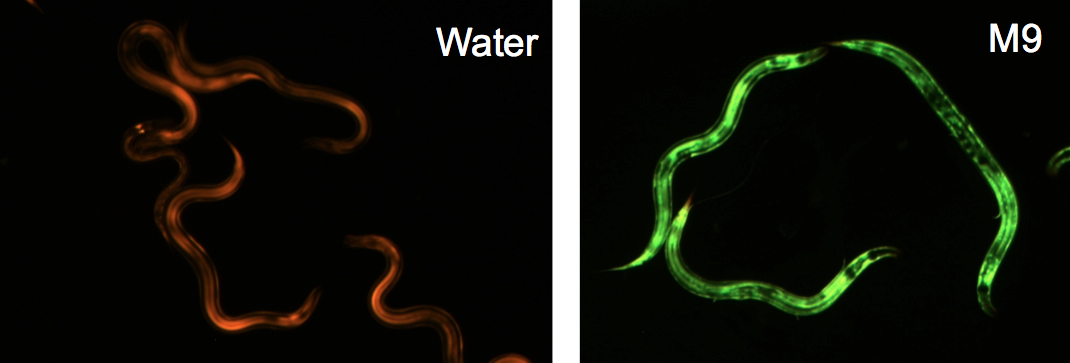Various stimuli affect the expression of different AMP genes. We’ve worked most with nlp-29, often relying on a standard reporter transgene, with GFP under the control of the nlp-29 promoter. Like the other members of the family, nlp-29 is expressed in hyp7. In young adults, nlp-29 expression is induced by infection with the fungus Drechmeria coniospora and by physical injury (Pujol et al., 2008). It is also induced by osmotic shock (Pujol et al., 2008). On the other hand, many stimuli that trigger the expression of stress-response genes, including starvation, heat-shock, heavy metals, or drugs like tunicamycin that induce an unfolded protein response do not up-regulate nlp-29 expression in young adults (Couillault et al., 2012). It is also, and this is a point we have tried to rectify in the literature (Wong et al., 2007), not induced by intestinal bacterial pathogens such as Serratia marcescens.
We have found that incubation of worms in M9 can also induce the expression of the nlp-29 reporter gene. After as little as 4 hours, GFP levels are increased by 2-fold, and leaving worms in M9 (with OP50) for 24 hours can provoke an increase of up to 20-fold (Figure 1). We carried out tests to see whether this increase was attributable to a single component of M9. Preliminary assays suggest that this isn’t the case (Figure 2), but we haven’t pursued our investigation further. Nor have we measured the expression level of other AMPs, but note that several of the genes in the nlp cluster appear to be controlled in the same way as nlp-29 (Pujol et al., 2008).
Our results do, however, suggest that as far as AMP gene expression is concerned, caution is needed when interpreting the results of any studies that involve incubation of worms in M9 for prolonged periods. We’ve reviewed our previously published results and do not believe it has been a problem. Nevertheless, we now routinely replace M9 with 50 mM NaCl.
Articles submitted to the Worm Breeder's Gazette should not be cited in bibliographies. Material contained here should be treated as personal communication and cited as such only with the consent of the author.


Leave a Reply
You must be logged in to post a comment.